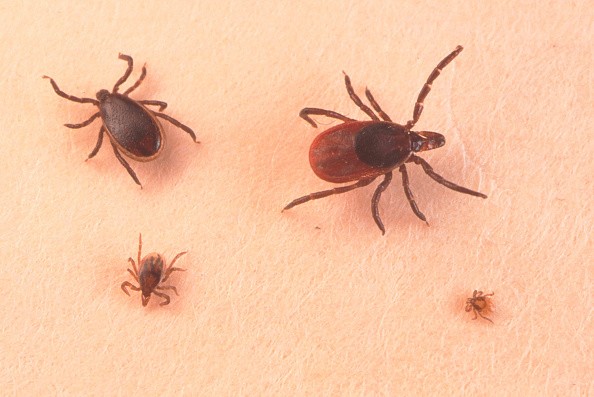A man in Spain was hospitalized with a virus spread by ticks, which is "fatal in roughly 30% of cases." The most severe signs include internal bleeding, organ failure, and eye and skin bleeding.

Tick Bite
A guy in Spain who was bitten by a tick was admitted to the hospital after being found to have CCHF, a disease that may kill up to 40% of those who develop it.
Medical Response
The patient was initially checked into a neighborhood hospital in Leon, Washington, in the northwest. He was then flown by a military aircraft to a different hospital on Thursday, according to the Spanish Defense Ministry.
Despite this pathology's clinical seriousness, health officials in the province of Castile and Leon stated that the man had a tick bite and was still in stable condition.
Tracking the Disease
The viral illness is more frequently seen in Asia, the Middle East, Africa, and the Balkans than in Europe.
The European Centre for Disease Prevention and Control (ECDC) reports that instances in Europe have just recently spread to the Balkans, Russia, Spain, and Turkey.
There have been some cases recorded in the UK, with the most recent example involving an Afghani woman occurring in March of this year. After incidents in 2012 and 2014 that did not spread to anybody else, hers is the third case known to have occurred in the UK.
Previous Outbreak
In 1944, Crimea saw the first outbreak of the illness. According to the World Health Organization (WHO), it has an overall mortality rate of 30% and a fatality rate ranging from 10% to 40%.
Spreading the Disease
According to the WHO, the virus spreads between people through intimate contact with blood or body fluids.
The illness can also be spread by tick bites or contact with contaminated animal blood or tissue.
The virus has not been discovered in ticks native to the UK or the Hyalomma tick, the disease's primary carrier.
The majority of CCHF patients are asymptomatic or mild. However, early signs and symptoms might include fever, capillary bleeding on the skin and eyes, sensitivity to light, muscular aches, dizziness, vomiting, nasal bleeds, bruises, and sore throat, which can result in internal bleeding and organ failure.
In 2011, Spain discovered the first case of CCHF. A Spanish guy was diagnosed with the illness following a tick bite in 2016 and later passed away.
Similar Disease
Pathologists discovered that the illness was the same as one found in Congo in 1956 in 1969, some 25 years after it was discovered for the first time in Crimea. The name of the virus was then created by combining the location names.
Antiviral medications are now used to treat patients' illnesses; however, neither a particular antiviral for CCHF nor a licensed vaccination exists.
According to WHO and ECDC, the only means to stop the virus from spreading are early detection, prevention, and separating patients from others in medical facilities.
Related Article : Scientists Double Effort to Find Possible Next Pandemic, Caused by Other Zoonotic Diseases
For more health and medicine related news, don't forget to follow Nature World News!
© 2026 NatureWorldNews.com All rights reserved. Do not reproduce without permission.





